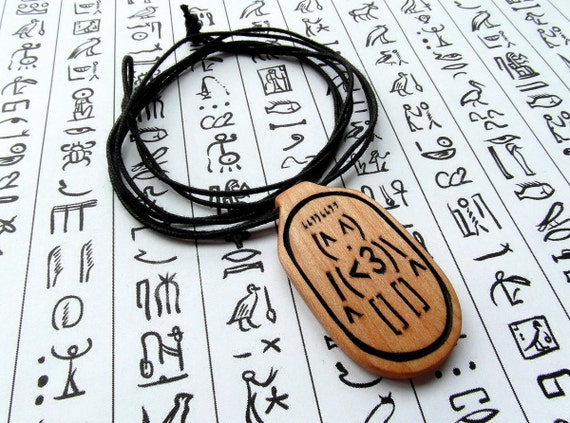,
Cartouche

A cartouche is a name plate. It's usually oval with your name written in the middle of it. A cartouche is attached to your coffin.
The ancient Egyptians wanted to make sure that their two souls - the Ba and the Ka - could find their way back to their tomb at night, after they died. No one wanted their Ba or Ka to get lost.
A cartouche made it very easy for a Ba and Ka to find their way home.
Click Here
Hieroglyphics
In the beginning, in ancient Egypt, over 5000 years ago, scribes wrote things down using pictures. That was a scribe's job, to write things down. Scribes used a system of pictures to do so. These pictures were called hieroglyphics. It was beautiful art. Each symbol had a meaning. But it took time to write things down using hieroglyphics. The scribes needed a faster way to write, because the ancient Egyptians loved to write things down. The scribes created a new written language called Demotic script.
Many years later, when archaeologists discovered hieroglyphic writing on the walls of tombs, they could not read it. They knew the pictures had meaning. But the best they could do was to guess what those pictures meant.
One day, about 200 years ago, someone found a stone in ancient Egypt, a very old stone. There was some writing on the stone. It was a very short story. The same story was written in Greek, in Demotic script, and again in hieroglyphics. Scientists could read Greek. They could even read Demotic script. Thanks to the brilliant Jean-Francois Champollion, they could now read hieroglyphics! Champollion was so good at ancient languages that he was on the staff of Grenoble University when he was only nineteen years old! His job was made a little easier because the ancient Egyptians surrounded royal names with an oval call a cartouche. There were many royal names surrounded by a cartouche. But there were two names in Greek - Ptolemy and Cleopatra. Champollion's job was to find those two names in the hieroglyphics. He did!
This stone was named the Rosetta Stone. The Rosetta Stone is currently on display at the British Museum in London, England.
Click the image:















0 Response to "Hieroglyphics"
Publicar un comentario